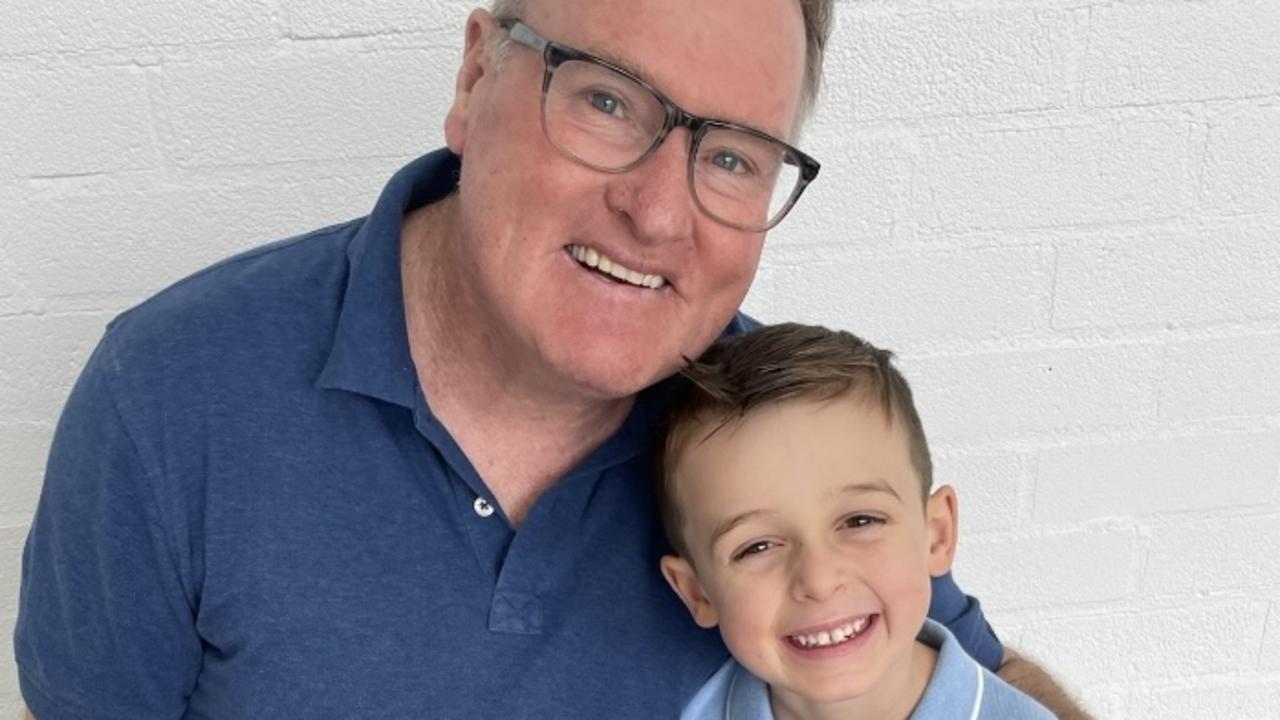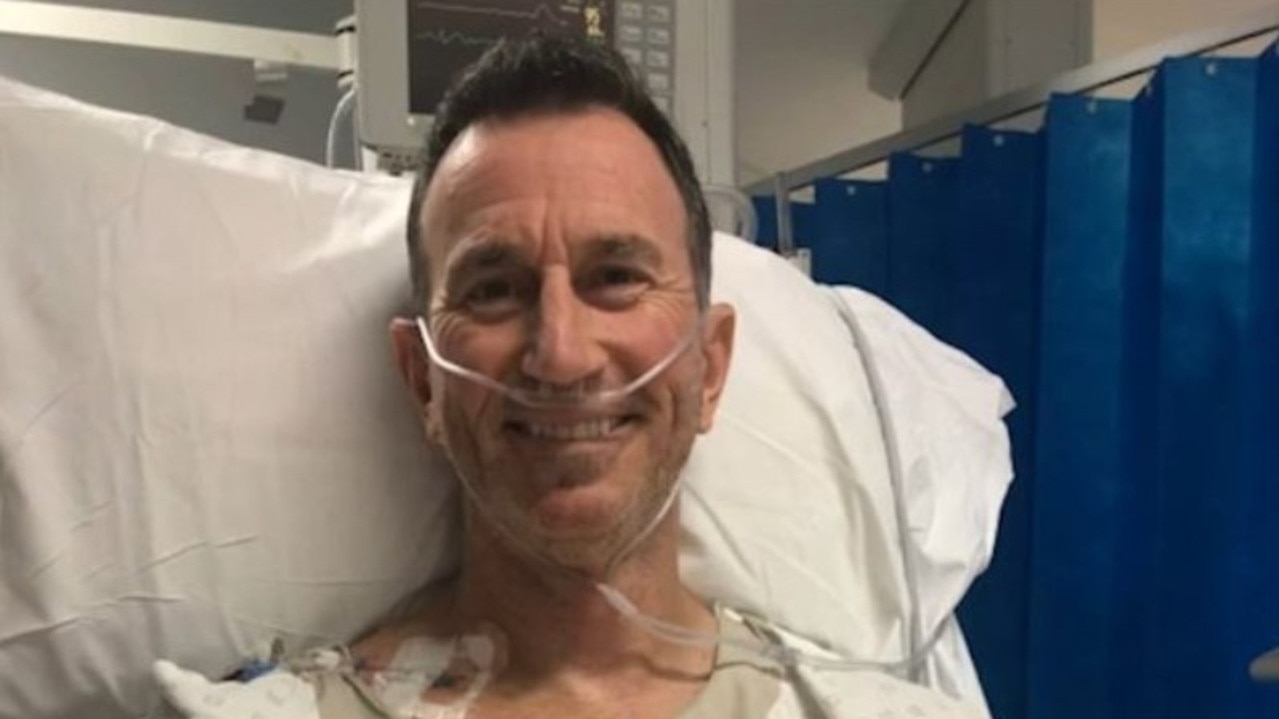Australia’s first dedicated cardiac hospital: A place where lives are saved
Simon Toussaint was playing cricket when he went to sit down as he thought he had reflux. Moments later he went into cardiac arrest. He’s lucky for what happened next.
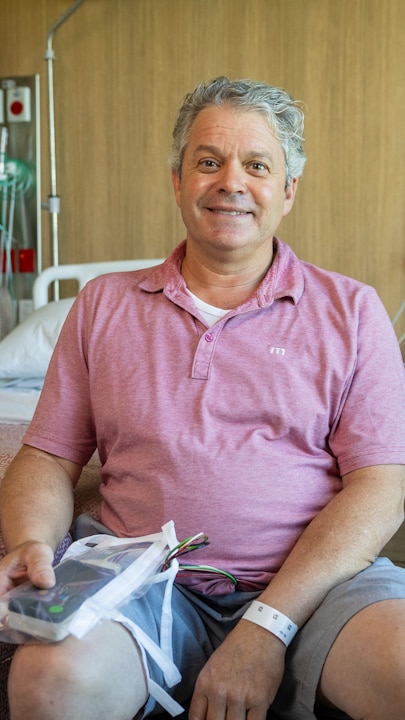
Heart Health
Don't miss out on the headlines from Heart Health. Followed categories will be added to My News.
Simon Toussaint’s life came very close to ending on a cricket pitch in February.
The reality of that dawns on Toussaint, 56, as he speaks from his hospital bed days later.
He is talking about how what he thought was reflux turned out to be a cardiac arrest, one witnessed by his teenage son Joel Marshall Toussaint and his cricket teammates – and one he almost didn’t survive.
Cardiac arrest is the sudden, unexpected loss of heart function. It is different to a heart attack which is caused when blood flow is blocked, but both can be deadly.
Toussaint remembers the unrelenting heat of that Saturday: 38 degrees, tough conditions for a wicketkeeper, especially one feeling a bit crook.
It was his first game for the year for the East Sandringham Cricket Club. Joel, 15, was at the other end, bowling. Theirs was a partnership perfected in the backyard.
“I took a catch from Joel,” Toussaint says. “We were having fun.”
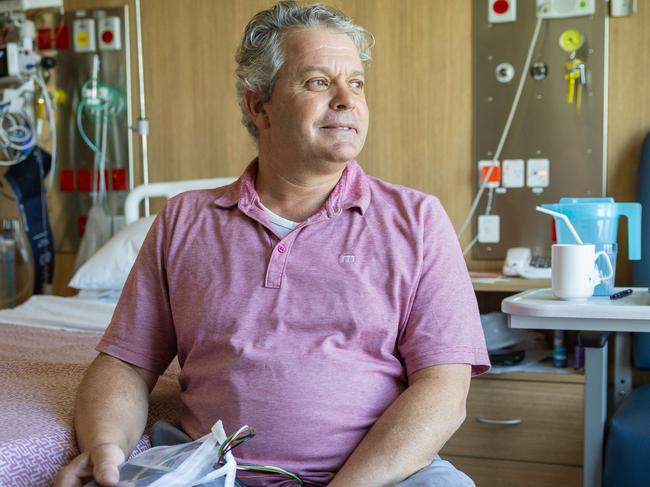
Their club is legendary, as much for its long history as for being the first home of spin king Shane Warne, who tragically lost his life to a suspected heart attack three years ago, aged 52.
The irony isn’t lost on Toussaint.
“I thought (the pain) was gastric reflux and then I got a bit weak at the knees so I went off and sat down,” he said.
He tried to return, but after one over went back to the shade to lay down. Toussaint said it was lucky he did.
He went into cardiac arrest, and if ever there is a time you want luck on your side, this was it.
The cricket ground was only minutes from the new Victorian Heart Hospital (VHH) in Clayton. In Toussaint’s cricket team was a former policeman who was a trained medic who just happened to have a portable defibrillator in the boot of his car.
On the sidelines was a former fireman, trained in cardiopulmonary resuscitation; lifesaving CPR, as was the opposition team’s captain. They worked together to keep Toussaint’s heart pumping until the ambulance arrived. A team effort.
He was lucky.
“The defibrillator kicked me back into life, apparently,” Toussaint said. “I showed signs of life in the ambulance and they got me here pretty quickly.
“I owe my life to the boys at the East Sandringham Cricket Club for providing some primary care that saved my life an the hospital and ambulance staff for putting me back together again and patching me up.”
For his son Joel, he said he was sorry he had to see his father so unwell and told him not to worry, as they had a lot more time together.
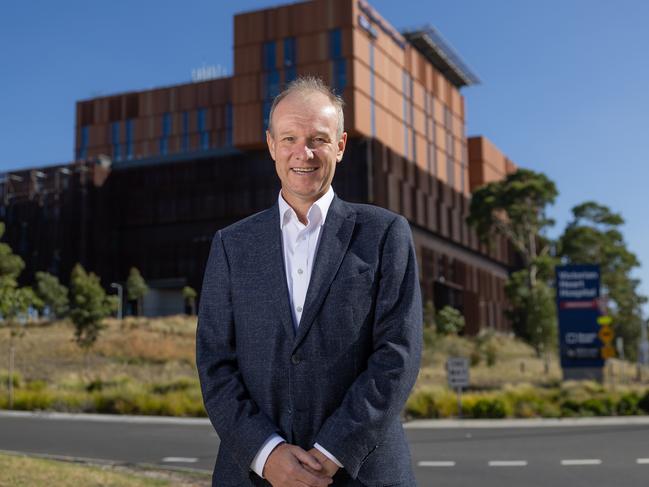
The VHH, led by Professor Stephen Nicholls, is a good place to be when your ticker is in trouble.
The public hospital is a joint project between the Victorian Government, Monash Health and Monash University and cost $577 million to build.
It opened in March two years ago and has since treated 20,000 Victorians in need of tailored cardiovascular care.
It has capacity for 206 beds and the ability to treat 28,000 cardiac emergency patients annually - think everything from heart attacks caused by blocked arteries to cardiac arrest when the “electrics” of the heart rhythm goes awry, to the complex causes of heart failure that stop the heart muscle pumping blood as it should.
A team led by Professor of Cardiology Derek Chew has delivered over 10,000 interventional cardiac catheterisation procedures in the past two years in its seven dedicated “cath labs”.
Chew is a clinical and interventional cardiologist and a cardiovascular health systems researcher and also the service director of the VHH.
The labs provide precision intervention by skilled teams who guide robotic arms to remove blockages from coronary arteries using advanced imaging.
They literally hold lives in their hands.
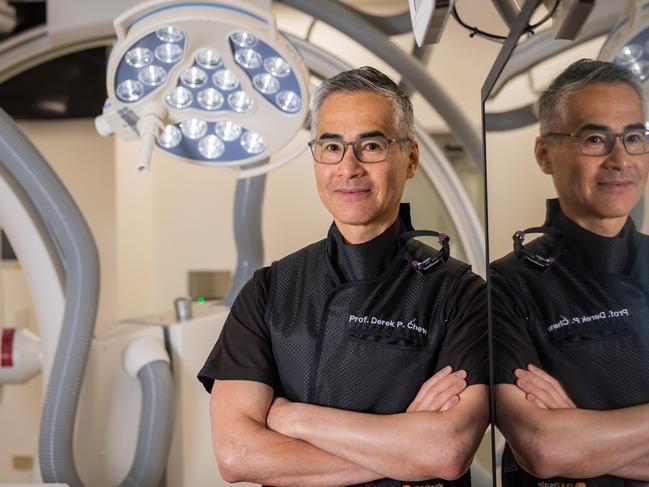
Chew is never still, running between the labs under his supervision while also mentoring the highly-skilled teams running them. These include interventional cardiologists, electrophysiologists, nurses, registrars and radiographers.
“So we’re dealing with the plumbing in here,” he says. “The electrophysiologists are the electricians who deal with all the electrical activity of the heart.”
In one of the labs is a 50-year-old Melbourne man relying on their skills and confidence to push a catheter up through his leg to clear the plaque that has blocked an artery; known as “widow-makers”.
Chew’s eyes never leave the screen as he calmly works through the procedure with the team. All the time teaching, encouraging.
“You can see here that he’s got a narrowing right at the very top,” Chew says. “This is the only indication this person needs bypassing.”
This is surgical procedure that creates a new path for blood to go around a blocked artery in the heart. It will save this man.
“Not every patient who comes here would need to come through the cath lab,” Chew says. “This is only for blockages, how we diagnose them.”
He says modern cardiology has become that because of these labs as it gives instant information.
“You can see the problem straight away and we can get access to the blockage.”
Lifesaving.
Chew also runs the cardiovascular disease monitoring group for the Australian Institute of Health and Welfare.
He says in Australia the rate of heart attacks is on the increase, particularly in young people under the age of 45.
Chew puts that down to the increase in obesity.
Director of the VHH and cardiologist Nicholls knows every nook and cranny of the award-winning hospital that even has an ECG incorporated into the design of its imposing facade.
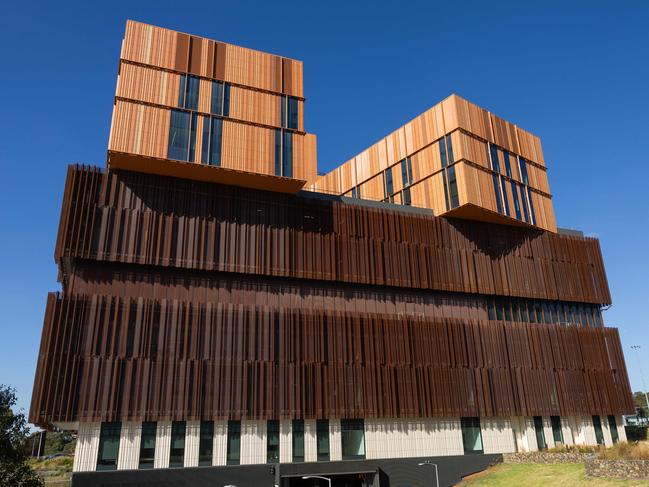
The cardiogram in the design is subtle; more a suggestion of what’s going on behind the scenes of Australia’s first dedicated cardiac hospital. The facade is made of steel, a bit like the 1000 people who work behind the scenes treating thousands of Victorians each year for cardiac-related health problems.
One in five Victorians who have a heart attack will come through its doors and into the serene environment - never tempt fate by using the word “quiet” in an emergency room.
Nicholls said the brief was that the building had to be both an important place for the clinicians and researchers and teachers, but crucially it also had to integrate with the Monash University campus on Blackburn Road.
Two years on, the hospital is at the heart of this thriving technology and innovation hub in southeast Melbourne.
It sits opposite Moderna’s new vaccine manufacturing facility and the Australian Synchrotron, which is a major research facility.
Across the road the precinct’s next piece nears completion, Monash University’s Velos Accelerator – a $17.5m state-funded build to accelerate healthcare innovation aligned with cardiovascular, kidney and metabolic diseases. It’s a critical step in the pipeline to allow the hospital, university and industry to quickly translate discoveries into real solutions for the community.
Nicholls is happy with the result, saying the design of the VHH enables its vision: integration and a reimagining of heart care.
“It had to be about innovation and how we were not just going to provide innovative care for a lot of people, but how were we going to teach people, how were we going to do cutting edge research, how industry was going to play into what we do,” he says.
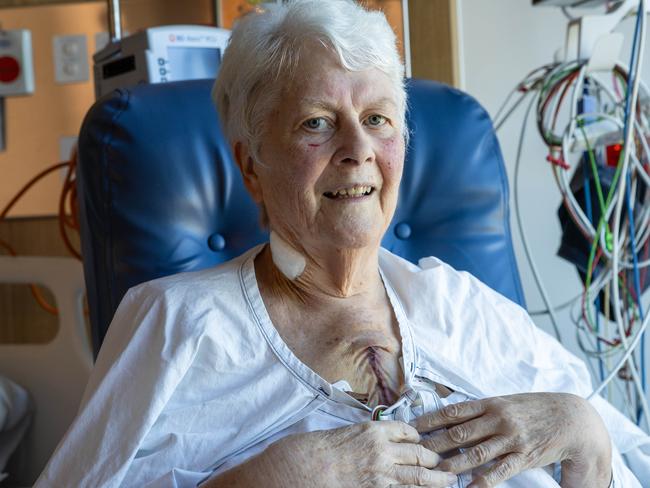
Judith Stone likes the view from her room. The 80-year-old Pakenham great-grandmother has a big window overlooking a garden.
She also has a neat scar running across her chest after undergoing open heart surgery to repair a blockage to a valve, one of 1500 Victorians to have surgery at the VHH since it opened.
“I thought I had indigestion, then I got pressure in my left arm and it was numb,” Stone said.
“I went to the cardiologist and had a stress test and he sent me for an angiogram, but they weren’t happy and I was told I needed more medical attention.”
Four days later Stone is sitting in a chair in the hospital, enjoying the sunshine and sending text messages to her family about when she will be home.
“The scar is not that big actually,” Stone says. “But they had to open me up, cut the rib cage.”
Minister for Health Mary-Anne Thomas said since the VHH opened in 2023 the service has transformed and saved the lives of thousands of Victorians and set a new standard as Australia’s first specialist cardiac hospital.
“The hospital cements Victoria’s reputation as a world-leader in cardiac medicine - with co-located services, research and education under the one roof set to benefit for generations to come,” she said.
Thomas also points out that not only is the VHH supporting Melburnians, but it is delivering critical care to regional patients through its telehealth facilities to connect country Victorians with heart specialists.
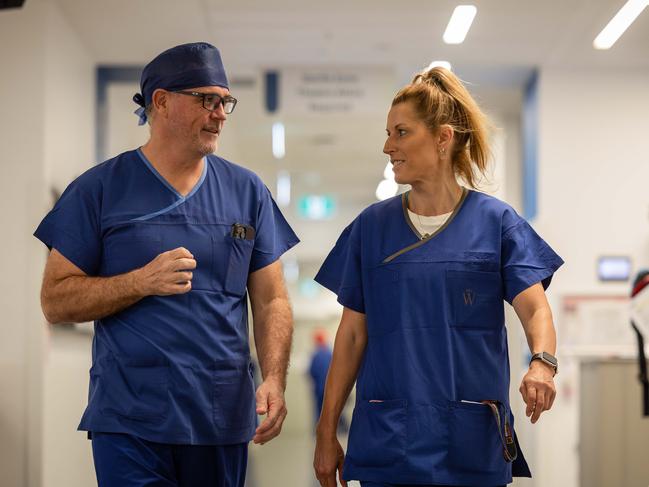
Professor Jayme Bennetts is the hospital’s director of Cardiothoracic Surgery who, along with Chew was headhunted from Flinders University in South Australia by Nicholls to join the VHH team.
Like Nicholls, Bennetts was born and raised in South Australia and although they had never worked together, they knew each other by reputation.
Why the move, leaving behind a busy and established practice, a lifetime of friends, his parents? Bennetts says it was about making a difference.
“I think the collegial interaction between surgery and cardiology is key,” he says. “That’s probably why they headhunted Derek and I, because we had that at Flinders University.”
“So I think trying to duplicate that here and make it bigger is what we are aiming for and surgically, my goal is that this is the biggest surgical service in Australia, and the best.”
He says they haven’t quite got it yet, but expects to achieve that goal within 12 months.
“We’re now the biggest surgical service in Victoria,” Bennetts says. “One of the biggest three or four in the country, so we’ve already grown far quicker than perhaps expected. I think the potential to grow further is already there.”
Bennetts says what’s unique is also being able to get patients in from regional Victoria.
“All of those things mean that we’ve got the ability to grow further, quickly,” he said.
“I think we’ve created a very efficient service that is regarded as being excellent by our peers. Now we need to make it work more efficiently, which is what we’re trying to do because potentially I guess everybody will want to come here.”
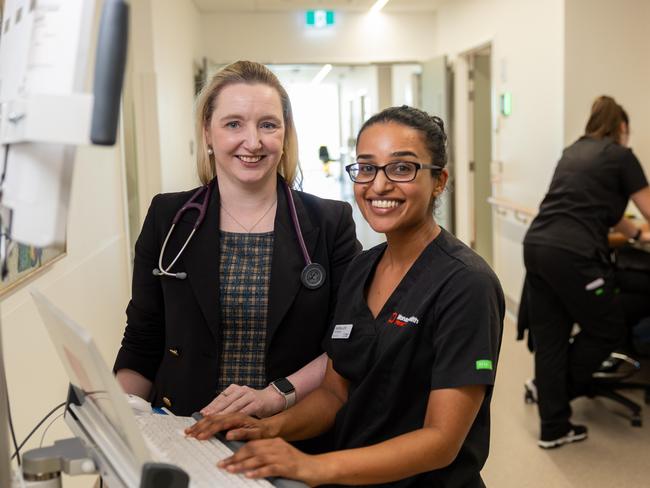
While most of the VHH’s patients are men, because heart disease in Australia is more common in men, women are catching up.
Dr Esther Davis is a cardiologist and researcher at the VHH and co-lead of its Women’s Heart Health Research Challenge.
She wants to see more women in cardiology trials and to do that, she says, will take building good relationships with the women in the hospital and in its clinics.
“I think that will help overcome some of the nerves potentially around clinical trials,” Davis says. “The other thing is obviously designing trials that are dedicated to answering questions about heart disease in women.”
She said the VHH was contributing to several large trials around the country looking at heart disease that was more common in women, or specific to women.
The team has also developed a women’s heart clinic with a focus on diseases that are more common in them.
“So the more unusual cause of heart attacks, spontaneous coronary artery dissection, heart attacks where we don’t find blockages in the arteries, coronary spasm, things like that,” she said.
“And then we also do a lot of work in looking after women before and after pregnancy and looking at risk factors that are specific to women. So all the pregnancy-related risk factors that … are risk factors for heart disease in the future.”
Davis says it is also about educating women on their future cardiovascular risk so they can be proactive about their heart health now.
Her aim is also to help educate all cardiologists, men or women. “Because ultimately if somewhere in the vicinity of more than half the population is female, every cardiologist, male or female, is going to have female patients,” she said.
“And so I think it’s about all cardiologists and also all practitioners in general understanding about heart disease in women so that we can all be empowered to look after women well.”
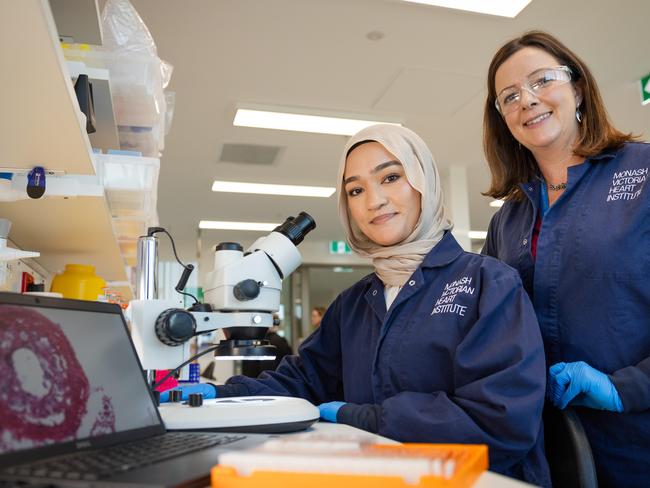
In a sun-filled laboratory Dr Kristen Bubb’s team is all about bed-to-bench research.
“The advantage of being here in the hospital, is that we have quick access to the patient samples,” Bubb says.
“Today we’re getting some blood from some people we’ve recruited to a study where we’re interested in understanding why people with certain genetic changes end up being predisposed to cardiovascular disease, heart attacks and so forth.”
Bubb did her PhD at Monash University before heading to London and then to Sydney before coming back to take on the role of head of the Vascular Therapeutics Laboratory.
She is part of the university’s Victorian Heart Institute (VHI) that is embedded within the VHH. It enables research, education and training to happen under one roof, benefiting from integration with the health service.
“It is fantastic because you’ve got access to everything through the university,” she said. “But being in the hospital is that next level, so we’re on campus, but here in the hospital as well.”
Clinical trials are run across Australia and the Asia Pacific through the VHI team and locally at VHH.
Bubb has worked across the world and says the VHH is a world-leading facility, up there with the best.
“I think the facilities here are so nice and shiny and new, which is great.”
Nicholls also sees the role of the hospital to educate and says there needs to be better awareness of heart health, “because this hospital is also the most successful if it links in with the community”.
“So people understanding how to prevent, knowing their numbers, people knowing that if they get symptoms, they go to the hospital, and everybody learning how to do CPR. That is the community call for action.
“We need ongoing investment in integrating care, research, education and community understanding so the Victorian Heart Hospital can continue to deliver and be a global player. We’ve got a bold agenda and we’re not apologetic about that.”
Of the team who have cared for her, Stone says they are “absolutely marvellous”.
“I haven’t been in hospital for 20 years and they have just been so helpful. I knew it was a big thing, but I didn’t have any fear.”
Now she is heading home to her six beautiful grandchildren and two great-grand-daughters.
“We are very lucky, we are all healthy and health is the most important thing.”
BY THE NUMBERS
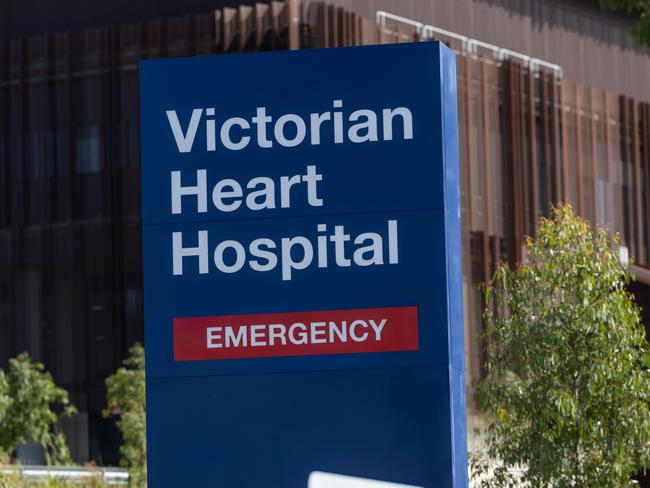
• 1000 in the team includes healthcare professionals, researchers, support staff and students
• ONE in five heart attacks in Victoria are treated at the VHH
• 10,000 patients a year
• 3-5 arrivals come via helipad each week which is connecting the hospital to regional Victoria
• 7 cardiac cath labs, the largest of their kind in the world
• 640 papers published since opening
• 110 Monash University researchers located onsite
• 60 clinical trials underway which are translating research into real-world outcomes
• 19 lives claimed every day in Australia by heart attack, the leading cause of hospitalisation and death
Originally published as Australia’s first dedicated cardiac hospital: A place where lives are saved



